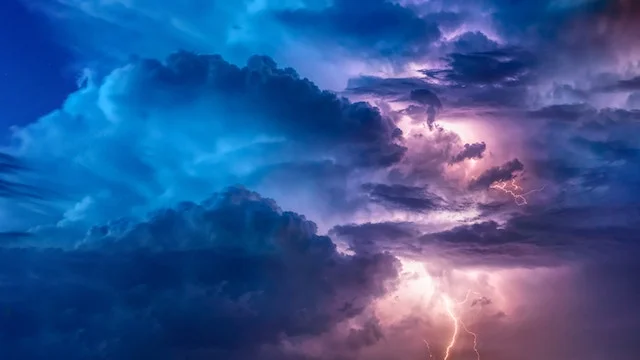Ernest Hemingway’s The Old Man and the Sea has long been interpreted as a tale of human perseverance, with the sea often cast as a symbol of struggle. Santiago, the aging fisherman, battles nature, time, and his own limitations as he confronts the giant marlin in an epic test of endurance.
While the sea is indeed the site of this confrontation, reducing it to a mere adversary oversimplifies its symbolic role. In Hemingway’s sparse yet evocative prose, the sea transcends the obvious metaphor of conflict—it becomes a reflection of Santiago’s inner world, a realm of mystery, connection, beauty, and timelessness.
To fully understand the symbolism of the sea in the novella, one must look beyond the central struggle and examine how Hemingway weaves its presence into every aspect of Santiago’s identity, philosophy, and solitude. The sea is more than just the battleground—it is the spiritual and emotional space in which life is contemplated and meaning is shaped.
The Sea as a Mirror of the Soul
From the very beginning of the novella, Santiago’s relationship with the sea is portrayed as deeply personal. He does not view the ocean as merely an external force, but as something with which he shares an intimate and almost spiritual bond. He refers to it as la mar, the feminine form in Spanish, a linguistic nuance that signals affection and reverence. This stands in contrast to the younger fishermen who call it el mar, a more masculine and detached term.
To Santiago, the sea is not an enemy. It is a mirror. It reflects his loneliness, his resilience, and his capacity for love and awe. When he gazes upon the ocean, he sees both its cruelty and its grace. It is capable of giving and taking, of nourishing and exhausting, just like life itself. The fluidity of the sea parallels the fluidity of Santiago’s thoughts, which flow seamlessly between memory, dream, and contemplation. In this way, the sea becomes a vessel for introspection—a place where Santiago is both tested and revealed.
The Sea as a Realm of Isolation and Freedom
Though the sea isolates Santiago physically—cutting him off from the village and human interaction—it simultaneously offers him a kind of liberation. On land, Santiago is poor, old, and viewed by many as unlucky. But on the sea, he is himself. He is not defined by social judgment or material failure. He is defined by action, instinct, and a timeless rhythm of life and death that he has come to understand deeply over decades.
This duality—of isolation and freedom—reflects the existential core of the novella. Santiago’s journey onto the sea is as much a departure from societal constraint as it is a confrontation with fate. Out on the water, he is free to think, to remember, and to connect with the world on his own terms. It is this solitude that enables him to forge a sense of dignity that is not dependent on victory but on effort and self-knowledge.
The Sea as a Living Ecosystem
Throughout the story, Hemingway populates the sea with life—flying fish, jellyfish, turtles, birds, and the massive marlin that becomes the object of Santiago’s pursuit. Santiago speaks to these creatures, sometimes affectionately, sometimes with melancholy respect. His conversations with the fish and birds reveal his understanding of the ocean not as a passive backdrop, but as a living community.
This ecological perspective adds another layer to the sea’s symbolism. It represents an interconnected system where every creature has its place and role. Santiago may fish to survive, but he does so with reverence. He admires the marlin’s strength, he pities the birds, and he curses the scavenging sharks not for their existence, but for their timing and aggression.
The sea, then, becomes a symbol of the natural world’s delicate balance—where beauty and brutality coexist, and where humanity is but one thread in a much larger fabric. Santiago’s respect for this balance deepens the moral weight of the novella and emphasizes the value of coexistence over conquest.
The Sea as Time and Memory
For Santiago, the sea is not just a present challenge—it is a place saturated with the past. His memories of youth, of better days, of great catches and adventures, all live in the waves and currents. The ocean carries the ghosts of his former glory and the echoes of lessons learned.
This temporal dimension transforms the sea into a symbol of life’s continuity. Santiago’s identity is not fixed in the now, nor defined by age or misfortune. It is fluid, shaped by years of experience on the water. The sea holds the memory of who he was and the promise of who he still hopes to be. Even in the twilight of his life, Santiago continues to return to it—not out of desperation, but out of faith that the sea still holds meaning for him.
Moreover, Santiago dreams of lions on African beaches—images from his youth that emerge repeatedly in the novella. These dreams, born from his time at sea, serve as metaphors for vitality, innocence, and possibility. They remind the reader that the sea is also a wellspring of imagination and longing.
The Sea as the Sublime
In moments of silence and reflection, Hemingway’s descriptions of the sea edge toward the sublime. The moonlight on the water, the changing colors of the dawn, the stillness before the marlin bites—these scenes are rendered with poetic restraint. They suggest that the sea contains mysteries that transcend language and logic.
This spiritual undertone enriches the symbolic value of the sea. It becomes not only a place of physical survival, but of metaphysical wonder. Santiago senses this, even if he cannot articulate it. His reverence for the sea’s beauty, its unpredictability, and its vastness reflects a worldview that honors nature not just as a resource but as a sacred space.
By portraying the sea in this way, Hemingway invites readers to consider the deeper dimensions of human existence. The sea is not merely where the plot unfolds—it is where questions of purpose, suffering, and legacy are confronted.
More Than Struggle
While The Old Man and the Sea is undoubtedly a story about perseverance and struggle, the sea within it cannot be confined to the role of an adversary. It is a complex symbol—at once intimate and vast, cruel and generous, isolating and freeing. It mirrors Santiago’s soul, holds his memories, and tests his spirit, all while offering moments of grace and connection that defy simple categorization.
To reduce the sea to a symbol of conflict is to miss the subtle, layered way Hemingway employs it throughout the novella. It is not just the setting of Santiago’s final trial—it is the stage of his self-realization, the boundary between man and meaning, and the silent witness to a life lived with quiet dignity.


